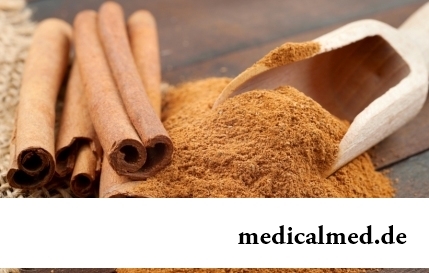





Flu
 General characteristic of a disease
General characteristic of a disease
Flu is one of the most widespread infectious diseases, concerns to group of acute respiratory viral infections.
Influenza viruses which at the moment there are more than 2000 types cause this disease. These viruses can extend in the form of epidemics which raising falls, as a rule, on the autumn and winter period, and pandemics which are registered each 30-40 years. Many patients treat flu rather scornfully, including it usual "cold" while annually about 250-500 thousand people die of this disease in the world.
People of all age categories are susceptible to an influenza virus, however this disease constitutes the greatest danger to elderly people, children, pregnant women, and also the people having pulmonary diseases and hearts. A source of flu is already sick person who to the environment allocates a virus by means of cough, sneezing etc. Having the aerosol mechanism of transfer (inhalation of drops of slime, saliva), flu extends quickly enough – the patient represents danger to people around within a week, since the first hours of infection.
Flu symptoms
Flu which symptoms are not specific cannot almost be distinguished from other SARS without special laboratory researches.
The diagnosis "flu" in practice is established preferential only on the basis of an epidemic situation.
The disease, as a rule, sharply begins: body temperature rises to 38-400C, is shivering, a headache, the aching joint pains and muscles, weakness. It is impossible to call allocations from a nose a symptom, typical for flu, as, on the contrary, are characteristic dryness in a nose and a throat of this disease. In most cases there is intense dry cough  which is followed by pain in a breast. Survey of the patient can reveal still such symptoms of flu as a hyperemia of the person, arterial hypotension, an injection of scleras ("red eyes"), granularity and a hyperemia of a hard and soft palate, relative bradycardia.
which is followed by pain in a breast. Survey of the patient can reveal still such symptoms of flu as a hyperemia of the person, arterial hypotension, an injection of scleras ("red eyes"), granularity and a hyperemia of a hard and soft palate, relative bradycardia.
Flu symptoms usually remain within 3-5 days then the patient is on the mend.
At a severe form of a disease of the most frequent complications otitises, sinusitis, pneumonia are, however development and such effects as wet brain, a vascular collapse, a hemorrhagic syndrome, accession of secondary bacterial complications, an exacerbation of chronic diseases is possible.
Treatment of flu
The long time treatment of flu was only symptomatic and assumed reception of febrifugal, expectorant, antibechic drugs, vitamins, in particular high doses of ascorbic acid, and also observance of a bed rest and the use of enough liquid. Today the symptomatic treatment of flu did not lose the relevance, however at the same time the understanding that, in addition to elimination of symptoms of a disease, it is necessary to fight directly and against its reason, that is with a virus came.
Drugs at flu have to be appointed by the doctor, today is effectively treated by antiviral drugs provided that their reception will be begun even before clinical displays of a disease.
For suppression of spread of a virus in an organism, decrease in weight of symptoms, reductions of duration of a disease and reduction of frequency of secondary complications it is recommended to accept such antiviral drugs as Zanamivir and Ozeltamivir (Tamiflu). These flu medicine is effective concerning many strains of flu, however their reception is possible only to destination and under control of the doctor. For blocking of proton pumps and prevention of penetration of a virus into cells use the drugs Rimantadinum and Amantadin. The antiviral and immunostimulating properties interferon drugs (Grippferon, Ingaron, Amisin) and interferon inductors (Kagotsel, Tsikloferon) have, however independent treatment of flu these medicines is undesirable, the doctor has to make the decision on expediency of their reception.
Also homeopathic flu medicine among which Otsillokoktsinum representing extract of heart and liver of a musky duck is widely popular have the right for existence. In spite of the fact that producers of some drugs on the basis of animal organisms or plants extracts claim that their means are effective in treatment and prevention of flu, as a rule, these statements have no clinical confirmations.
Prevention of flu
The flu inoculation represents a traditional way of the prevention of a disease. Vaccination is most shown to children, elderly children, patients with chronic diseases of lungs and hearts, to doctors. The flu inoculation assumes introduction to the healthy person of the live, inactivated vaccine containing antigens usually of three virus strains which are selected on the basis of WHO recommendations.
 The emergency prevention of flu it is possible to call intranasal (drops in a nose) administration of interferon (Nazoferon) which is reasonable for applying after close communication with infected. Also at direct contact with the patient can save use of a gauze bandage, use of Remantadinum or greasing from infection with flu Oxolinic ointment of the nasal courses.
The emergency prevention of flu it is possible to call intranasal (drops in a nose) administration of interferon (Nazoferon) which is reasonable for applying after close communication with infected. Also at direct contact with the patient can save use of a gauze bandage, use of Remantadinum or greasing from infection with flu Oxolinic ointment of the nasal courses.
Nonspecific prevention of flu assumes: airing of the room, frequent washing of hands special means, wet cleaning using disinfectants, and also disinfecting of air by means of ultra-violet radiation, catalytic cleaners, aerosol disinfectors. For maintenance of the immunity capable to resist to a virus, it is necessary to include in a diet products, vitamin-rich, lactobacilli, and also to use honey, propolis, a uterine milk.
The prevention of a flu epidemic in many respects depends on consciousness of already sick person who needs to avoid public places with big accumulation of people for whom sick, especially coughing and sneezing, constitutes potential danger of infection.
Stomatologists appeared relatively recently. In the 19th century to pull out painful teeth belonged to duties of the ordinary hairdresser.

The unpleasant feelings connected with spring breakdown are familiar almost to each of us. Often happens that in March-April on the person...
Section: Articles about health
Practice of use of table salt in the therapeutic purposes contains not one century. Applications which do by means of the fabric impregnated with saline solution are considered especially effective. They possess antibacterial and antiinflammatory эффек...
Section: Articles about health
Beauty shop – the place which is associated only with positive emotions: joy, pleasure, relaxation. However visit of salon where work with biological material of clients, not always harmlessly is conducted. Today more than 100 pathogenic microorganisms who can catch in beauty shop including deadly to health are known....
Section: Articles about health
Since the moment when the child becomes a school student, his sight begins to be exposed to the strengthened loadings which are supplemented viewing...
Section: Articles about health
It seems, quite recently you brought the baby from maternity hospital, but time flew by, and here it is already going to join the first in life children's collective. How to prepare the child for visit of a garden? What needs to teach him to facilitate process адап...
Section: Articles about health
Obesity is called a disease of 21 centuries, for the last 100 years the number of the people suffering from excess body weight considerably increased. Statistically, on Earth already about 1,5 billion corpulent people, and 500 million from them have the extreme degree of completeness negatively affecting quality and duration of their life. What served as the reason of growth of stout persons on the planet? How not to get to their ranks? Let's consider five main premises for increase in body weight in conditions современнос...
Section: Articles about health
The kid who was recently born is surrounded with love of adult family members and their cares without which the baby cannot exist....
Section: Articles about health
Ayurveda - the most ancient tselitelsky practice which came to us from India. It represents the doctrine about maintenance of physical, psychological and moral health of the person by means of the complex of procedures including a diet, cleaning of an organism, respiratory упр...
Section: Articles about health
One of the useful properties presented to the person by the nature is ability to feel fear. This ability is designed to signal about approach of a dangerous situation and to help to avoid in advance it to keep life. However if the fear is persuasive and is not reasonable, it can seriously limit possibilities of the person in respect of socialization and self-realization. Such pathological fear is called a phobia....
Section: Articles about health
Small appetite at the child – the complaint which pediatricians should hear practically from each mother. Most often it is carried to разр...
Section: Articles about health
80% of women at least once to lives complained of discomfortable feelings to breasts, consolidations and nagrubaniye. These are mastopathy symptoms. The mastopathy is characterized by change of a ratio between ferruterous and connective tissue tissues of mammary glands. It can bring...
Section: Articles about health
Aspirin (acetylsalicylic acid) – one of those drugs which are known literally to all. It is available in each home first-aid kit, and many accept it at the first signs of an indisposition, often without having a fair idea of properties and therapeutic effect of drug. Meanwhile, impact of aspirin on a human body is very various, and is not always favorable. About it it is important to foreknow, in order to avoid emergence of problems with health....
Section: Articles about health
It is difficult to revaluate importance of kidneys for an organism. These bodies not only perform work on purification of blood of decomposition products and выв...
Section: Articles about health
We live during an advertizing era. Daily each person receives a solid portion of persuasive councils about what to eat to be healthy and successful. Products about which we will talk today are combined by the following circumstance: all of them are positioned as most...
Section: Articles about health
All like to sing. Small children with pleasure are engaged in a vocal, not especially thinking of hit in a melody. Adults most often hesitate, being afraid to show lack of talents in this area, and it is vain: singing is very useful for health....
Section: Articles about health
Aging — natural and inevitable process. Over time our skin loses elasticity, on it saggings, a face form теря are formed...
Section: Articles about health
For the time being the perspective of heart diseases seems to most of people remote and foggy. But sooner or later practically each adult faces extremely unpleasant feelings: sudden stethalgia. To be consoled at this time in a thought of t...
Section: Articles about health
The winter swimming in open reservoirs called in our country by "winter swimming" – officially recognized sport and one of the most extreme ways of a hardening of an organism. This occupation has an old story and adherents in many countries. The international competitions in winter heats on open water, and every two years – the World Cup are annually held. Despite huge popularity and the proved advantage for health, winter swimming is still surrounded with hardy delusions. Ра...
Section: Articles about health
One of the major chemical processes happening in a human body are oxidation reactions. They go with participation of fats...
Section: Articles about health
Smoking not only exerts a negative impact on the state of health of the consumer of tobacco products, but is an air polluter the substances potentially dangerous to people around. In recent years significantly the number of people, стремящ increased...
Section: Articles about health
Doctors claim that the people not so familiar with a dorsodynia occur among adult Russians very seldom. At the same time the vast majority of the patients who are periodically testing this indisposition do not hurry to ask for medical care at all. On the one hand, there is an opinion that feelings of this sort at mature age are nearly natural phenomenon which is not doing serious harm to health. With another – practice of self-treatment various obezbol is eurysynusic...
Section: Articles about health
What is in our understanding weeds? It plants which are considered to be suitable only for compost pits and feeding жи...
Section: Articles about health
You are office worker, the driver, the fan of winter sports or do not think of life without bicycle? You lead a slow-moving life and you move on the city only on the car? You have no constant partner and you do not love the protected sex? Attention! You one...
Section: Articles about health
New year, wedding, birthday, office party – an occasion to drink at the Russian person will always be. How to reduce a negative impact of alcohol by an organism and to avoid a condition of strong intoxication? The most correct council – to refuse the use of alcoholic drinks. Council is true, but not always feasible. We offer several advice which will help you in cases when it is impossible to avoid alcohol intake....
Section: Articles about health
It is known that the person for 80% consists of water which participates in all processes of an organism. The person loses liquid daily – in...
Section: Articles about health
Among a set of the perfumery and cosmetic goods which are released today the special group is made by the means containing antibacterial components. Such types of gels, shampoos, soaps, creams, lotions and other products are positioned by manufacturers as a panacea...
Section: Articles about health
The endocrine system carries out extremely important role in a human body, practically all processes of life activity are regulated by it. Closed glands (hemadens) produce special biologically active agents – hormones which then get to a blood channel and are transferred to bodies addressees, or as they are called still, to target organs. Frustration of this mechanism are fraught with development of serious chronic pathologies....
Section: Articles about health
